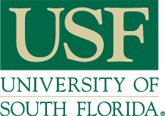Below is a summary of the abstract you submitted. Presenting author(s) is shown in bold.
If any changes need to be made, you can modify the abstract or change the authors.
You can also download a .docx version of this abstract.
If there are any problems, please email Dan at dar78@pitt.edu and he'll take care of them!
This abstract was last modified on March 21, 2024 at 8:36 p.m..

MaVan is a CT cluster phage that infects Gordonia rubripertincta. During the genome annotation it was determined that MaVan contained an operon with four genes encoding enzymes predicted to be involved in thymine synthesis. Specifically, genes 45, 48, 49 were identified as encoding: dUTPase, thymidylate synthase, and thymidylate kinas, respectively. Gene 43 also encodes a deoxycytidylate deaminase that can function in thymine synthesis. The goal of this project was to bioinformatically evaluate these enzymes and develop a hypothesis regarding the function of this pathway in phages. MaVan’s genome was annotated using a variety of tools, including DNA Master, NCBI BlastP, HHPred, Phamerator, GeneMark, and PhagesDB. Detailed analysis of the enzymes shows that they have conserved amino acids in the active sites, confirming the validity of the annotated function. Within CT cluster, there are 38 phages with the same genome structure that also have at least 2 NKF genes. Thymidylate synthase is consistent in all of the cluster CT phages. However, three phages do not have dUTAPase, but have annotated a MazG nucleotide pyrophosphohydrolase that may be able to function like a dUTAPase. Polynucleotide kinase was also annotated instead of the more specific thymidylate kinase in 19 out of 38 CT phages. These enzymes have important functions in humans, but since phages do not carry out metabolism and utilize nucleotides produced by the host bacteria, it is unusual to find a series of these genes in a phage genome. The enzyme dUTPase, for example, has been found to help to maintain low intracellular dUTP/dTTP ratios, that prevents extensive mutations through double strand breaks. The genes identified in MaVan do not constitute the full thymine synthesis operon as the final nucleoside-diphosphate kinase has not been identified. It is intriguing that there are two genes of unknown function within the identified “operon” that may be novel enzymes never identified. Future work will focus on wet-lab studies to validate the enzyme functions and whether the pathway can actually synthesize thymine. This work may reveal important insights into phage evolution and how phages improve fitness. We thank the SEA PHAGES consortium for all the support of our work.
